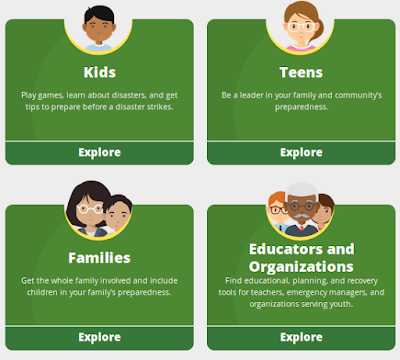Ready.gov Build A Kit
Note: September is National Preparedness Month. Follow this year’s campaign on Twitter by searching for the #NatlPrep #BeReady or #PrepMonth hashtags.This month, as part of #NPM22, I’ll be rerunning some updated preparedness essays, along with some new ones
#17,014
In September of 2019, in a National Preparedness Month essay, I wrote:
No matter where you live, if you've got kids, the odds they will have some sort of brush with an emergency or disaster over the next decade. Hopefully it will happen when they are with their parents, but it could happen at school, or other times when they are away from home.
While I was envisioning somewhat more common disasters - like earthquakes, tornadoes, floods, or hurricanes - a few short months after that post, you'd have been hard pressed to find any adolescent or child who hadn't been greatly affected (read: traumatized) by our COVID-19 pandemic crisis.
As much as we'd like to spare our children the stress, grief, and physical dangers from disasters and other crises, we are all passengers on a violent and often unpredictable planet. And sometimes (warning: anachronistic cultural reference ahead), it provides us with an E-Ticket ride.
Many of us of a certain age got our early initiation into preparedness in the boy or girl scouts, where we learned basic first aid, and what to do in an emergency. Today, that is less likely to be the case.
I was lucky enough to grow up aboard a 50-year old 63-foot wooden boat (photo below) where I learned to swim, fish, tie knots, steer by compass, read nautical charts, and even row a dinghy down the channel (alone) by the age of 9.
I am also the product of the cold war, of the Cuban Missile Crisis (I was 8), of duck and cover drills, weekly CONELRAD alerts on TV, and films like Survival Under Atomic Attack and `Bert the turtle’ PSAs in elementary school.
It was, admittedly, a different time. But it provided me with the confidence and basic skills I'd need to pursue a career as an EMT (age 18) and a Paramedic (age 20). Not such a bad result, actually.
Today, while many threats remain, parents appear more reticent to discuss emergency preparedness with their kids. Fortunately, disaster preparedness – particularly for kids - has come a long way from the `bad old days’ of the cold war.
Ready.gov provides age appropriate tools for parents and teachers to teach emergency preparedness to both kids and teenagers.
While most parents want to protect their kids from undo worry - when a disaster threatens, it threatens all of us – regardless of our age.
Helping kids to understand more about emergency preparedness and community resilience will help them cope (and perhaps, even help) in the event they, or their community, are caught up in a disaster.
I strongly urge parents to find and teach age-appropriate preparedness skills to their children. To include them in family `emergency drills' and discussions, and to make sure they know where to go (a friend, a neighbor, the local fire house etc.) if they should become separated from the family during an emergency.
For more resources for teaching kids about emergency preparedness, you may wish to visit:



